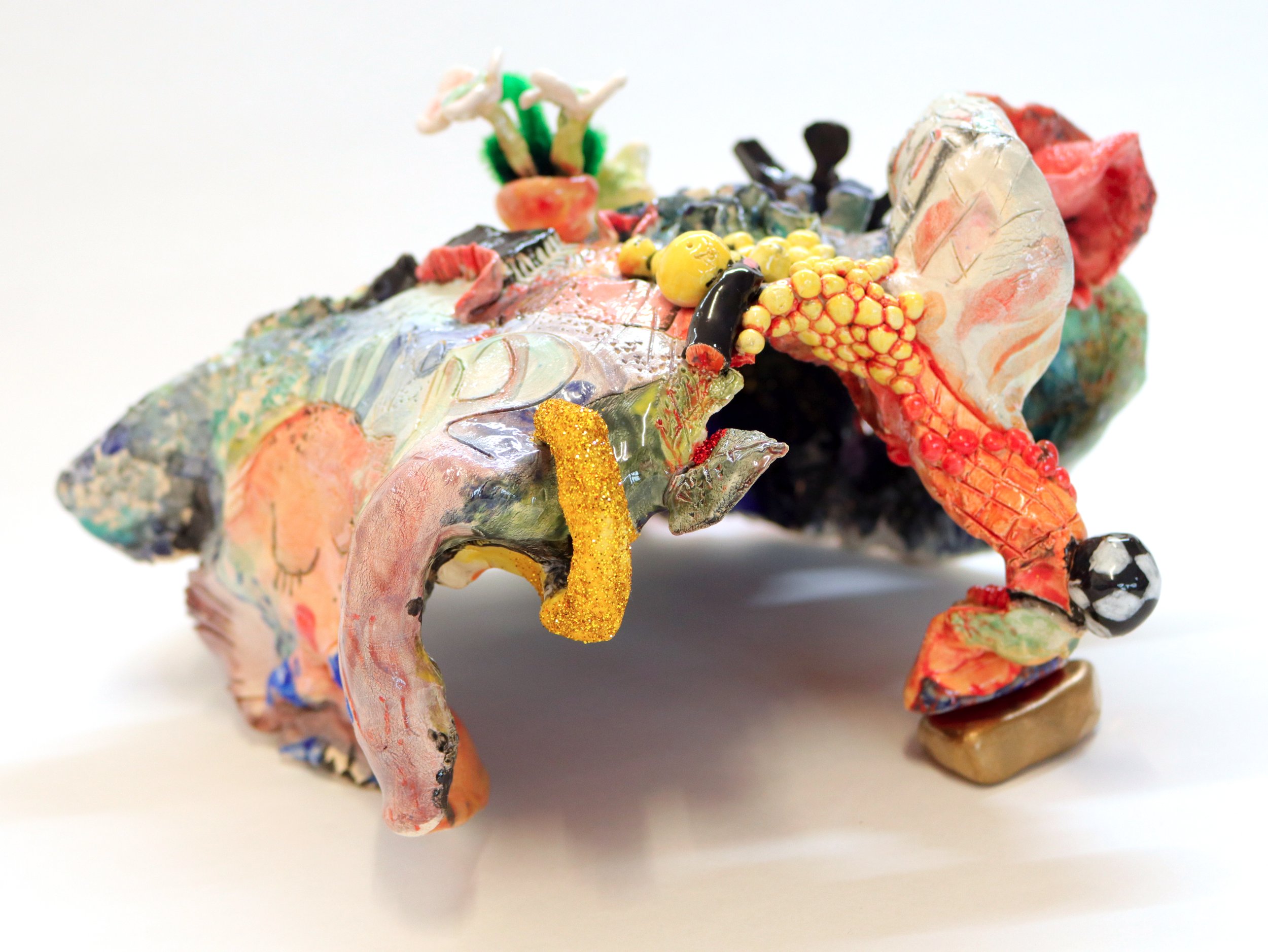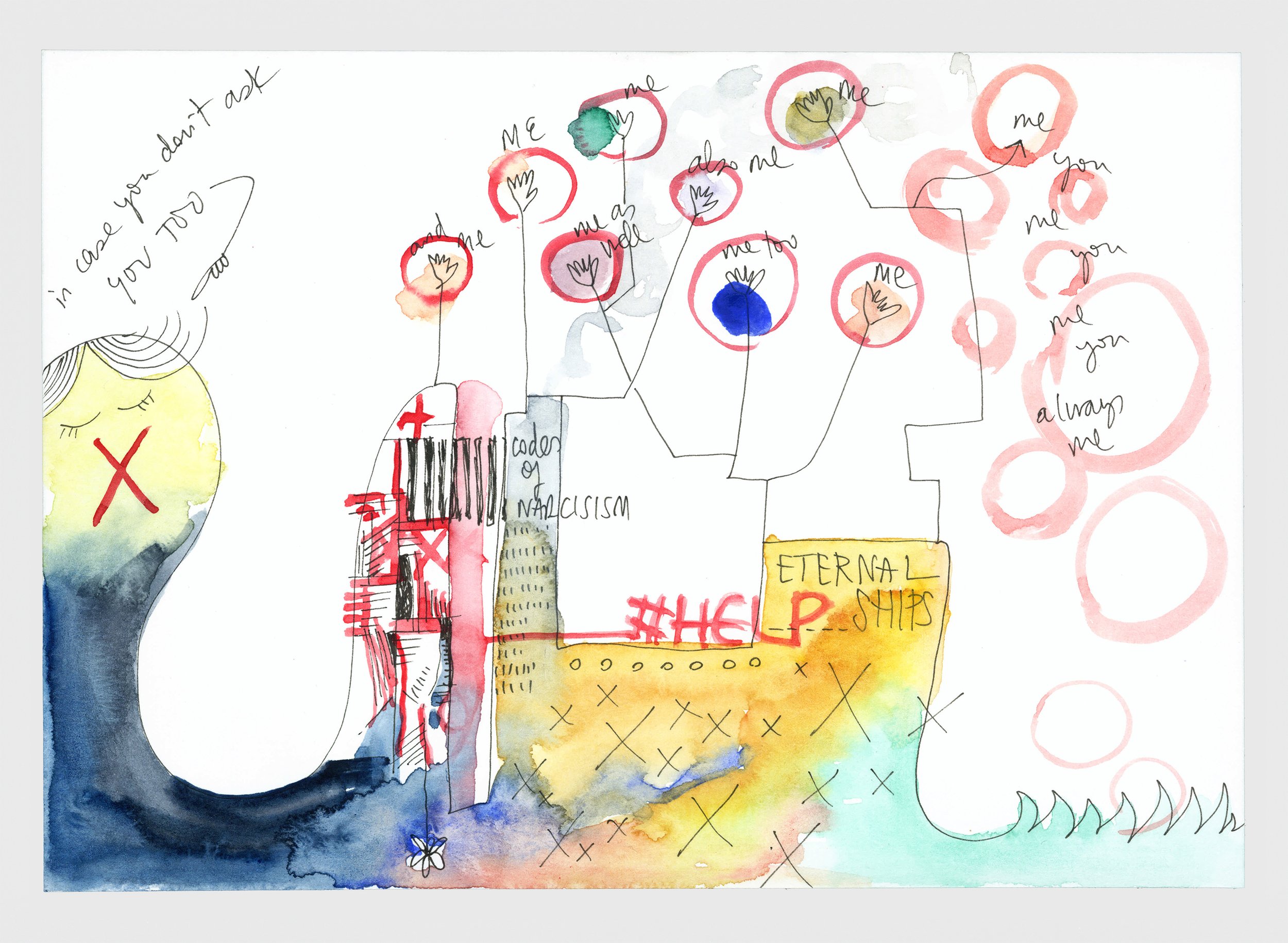
IT’S A SPRING SHOW — 4 March-9 April 2022
IT’S A SPRING SHOW includes recent works by Alicia Velázquez and Claudia Kübler. In their 150 m2 space Ruettimann Contemporary concurrently exhibit works by Aoife Dunne, Simon Ledergerber, Hannah Parr, Ingo Rasp, and Valentina Pini.




Alicia Velázquez
Spanish-born artist Alicia Velázquez (*1969) employs in her practice a vast array of techniques and tools to experiment with and explores inner and outer circumstances. When working with a material or technique she has not been familiar with thus far, she perceives this as a new encounter, as if encountering a new person. She engages in a dialogue with whatever or whoever she crosses paths with and lets herself guide intuitively by the emotions, memories, or cultural references that arise in the precise moment of an encounter. To Velázquez, her body is an extended tool forming part of a particular scene at any given moment. This transfers to her performances which often bear a ritualistic character. Therefore, the line between performing artist and simply being a human engaged in daily activities is blurred.
Overall, Velázquez’ all-embracing practice has a very stimulating and playful stance. At the same time, it often takes on a personal and intimate character inviting the viewer to enter the work, to interact, and participate in it.
Works at Ruettimann Contemporary
Velázquez’ physical works equally embrace fluidity and spontaneity. Her Drawings, each time created in a single session, are the result of yet another encounter with herself, others, a particular object, or a material she is fascinated with. The words she inserts evoke l’écriture automatique, automatic writing, that has been applied by the surrealists to prevent the reason to override one’s feelings and emotions.
In her work Ceramic World 2 (2021), Alicia Velázquez experimented for the first time with glazed ceramic. She experienced the encounter with this new and unknown material as a process of discovery and gradually learned how to deal with its unpredictability. The procedure of coloring the tiny figurative scenes that unfold throughout the ceramic, took place over the course of several months. The slow and careful approach allowed her to return to this small world out of clay each time she added another layer of color. Simultaneously, by keeping on coloring the sculpture throughout multiple sessions, she unveiled new meanings to the work and the various scenes that populate it.
Claudia Kübler
In many of her multilayered works Swiss artist Claudia Kübler (*1983) explores the various perception-related concepts of time such as the hypotheses of ‘Deep Time”. These temporal dimensions largely exceed the human horizon in terms of longevity and durability. Kübler’s interest in time stretches towards an attention to geological processes, the query of how mankind came into being, cycles and other non-linear, concepts of time.
Kübler also questions our impact when interacting with her artworks. Due to the chosen materials and the artist’s silent invitation vis-à-vis the public to interact with her work, Kübler’s installations and objects are often bound to change or to dissolve entirely. Thus, she confers time or the impermanence of an artwork yet another meaning by making the transience of things visible to our eye.
Works at Ruettimann Contemporary
The work series ‘You are Here’ revolves around an installation made from pulverized sedimentary rock originated from a South African region otherwise known as the ‘Cradle of Humankind’. The artist manually and painstakingly pulverized the red rock to lay out on the floor the iconic symbol of online maps indicating ‘you are here’. The stone powder is being spread without any form of fixation. The installation’s fragile baseline thus questions the claim ‘you are here’ and its accompanying longing for (self-) location. Kübler extended her heterochronous installation onto works on paper.
‘Fwd: Re.RE’ is a series of round objects bearing a resemblance to clocks. Crafted with fragments of a former room installation (Regolith II), made of plaster and shellac, as well as with copper cables, Kübler addresses the concept of deep time. By reusing the broken pieces of a preceding work, the artist refers to the cycle of geological processes like erosion or sedimentation whereas the cables, on the contrary, represent the contemporary connected world.